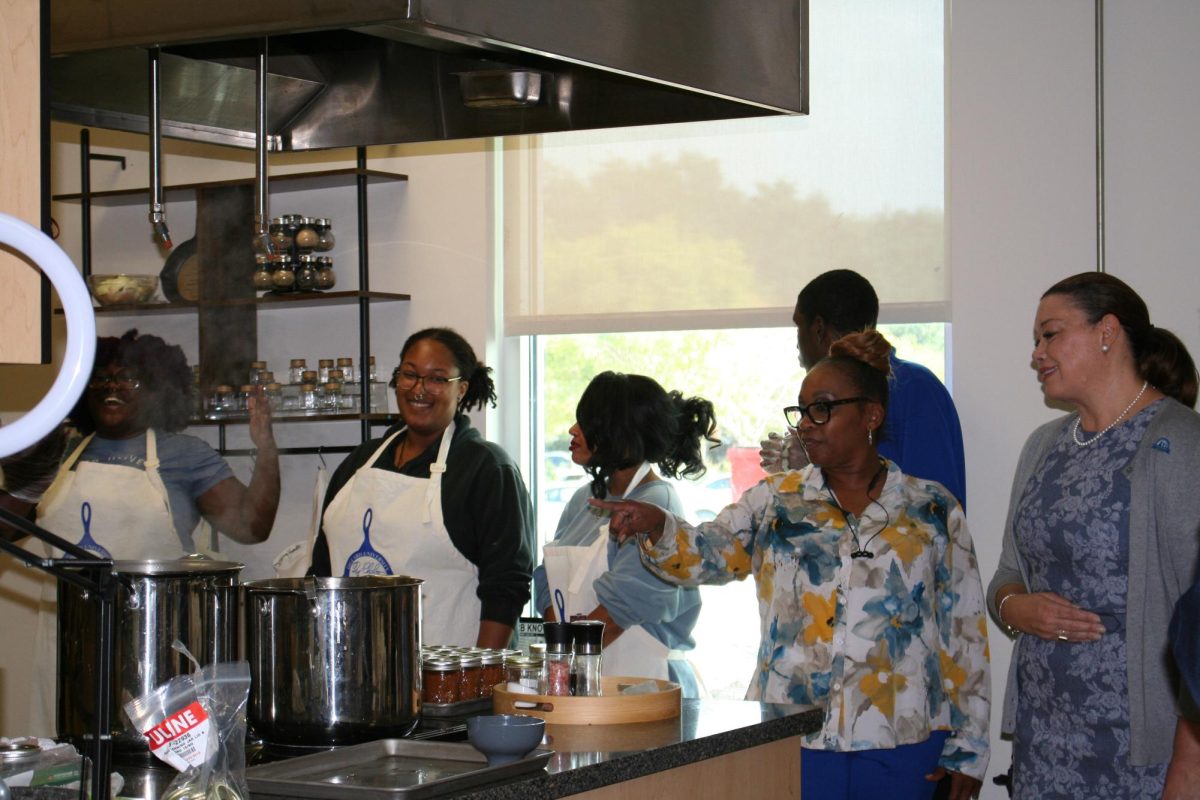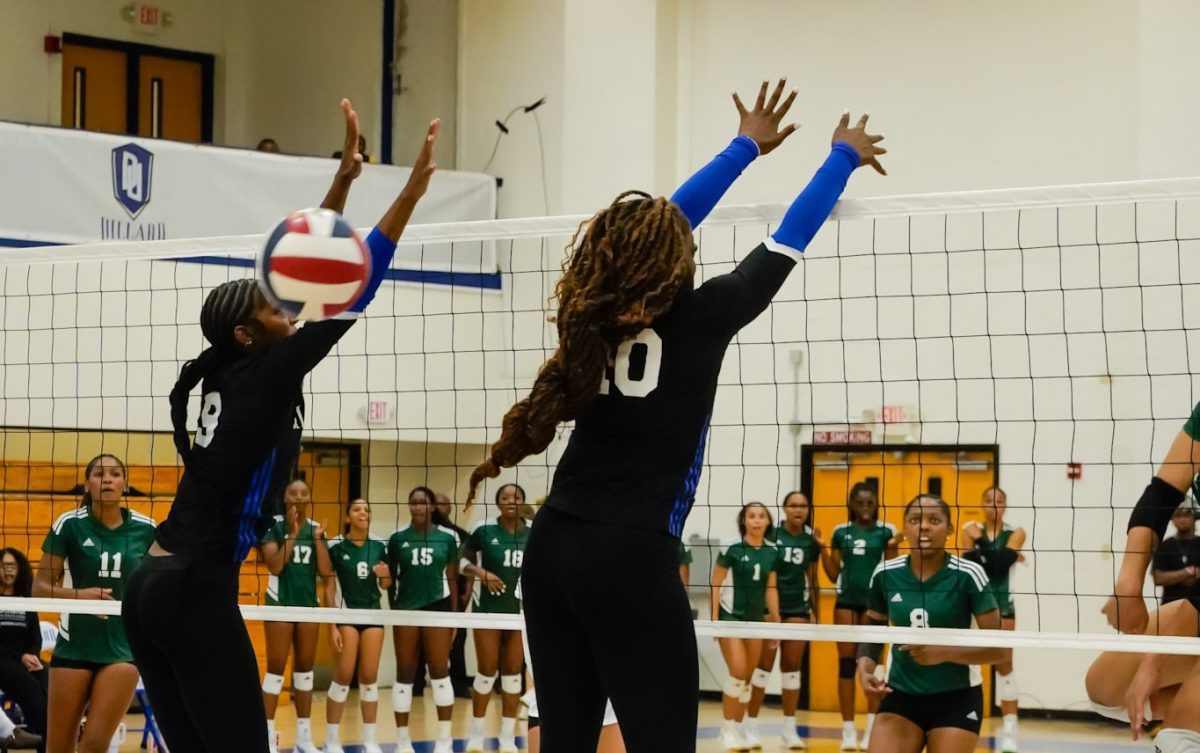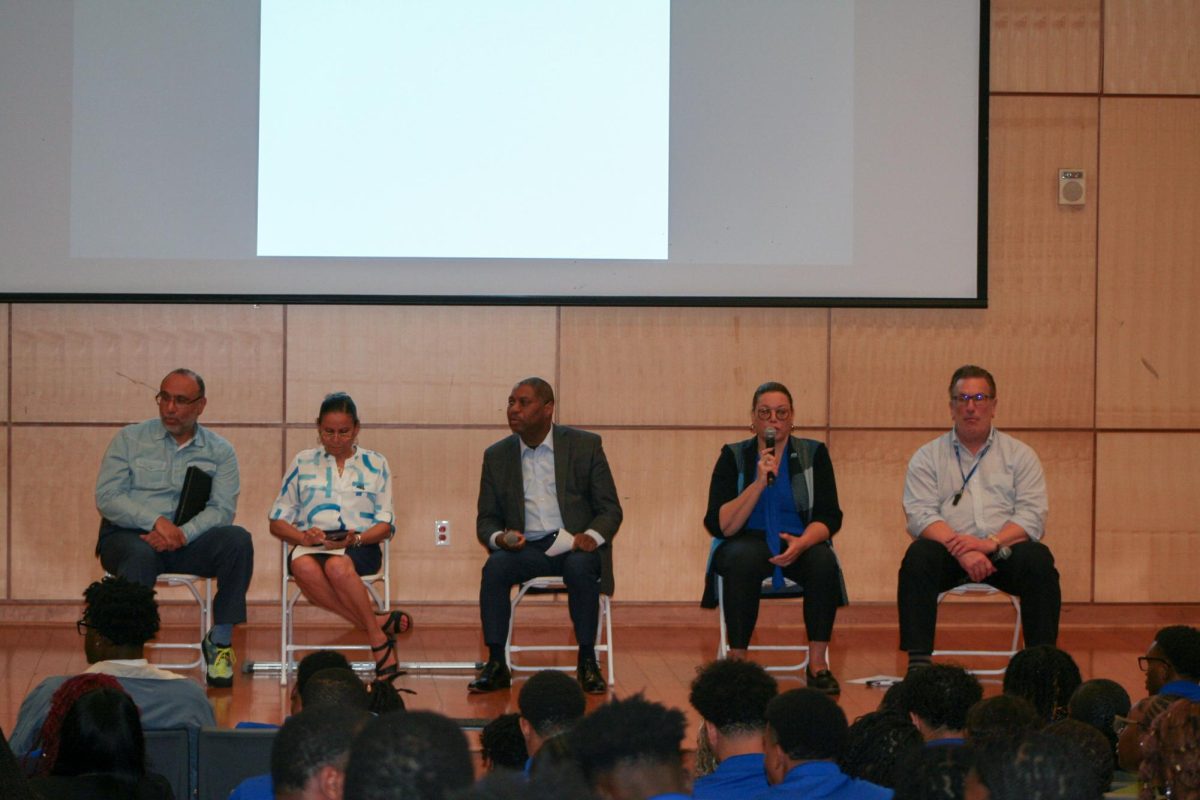
Dr. Lakisha M. Simmons, assistant professor of history and women’s studies at the University of Michigan, signs a book for Dr. Mona Lisa Saloy, a DU English professor, after Simmons' Brain Food lecture recently in Georges Auditorium. Simmons is author of “Crescent City Girls: The Lives of Young Black Women in Segregated New Orleans,” a book that won the 2016 Julia Cherry Spruill Prize from the Southern Association of Women Historians.
NEW ORLEANS (Feb. 10, 2017) — A 14-year-old New Orleans girl sexually harassed and killed by a policeman in the 1920s. An integrated party with Dillard students that prompted attendees’ in the 1940s. The inappropriate use of convent incarceration for victimized black girls during the Jim Crow era.
These are some of the stories Dr. Lakisha M. Simmons, a feminist historian, shared during a Brain Food lecture Wednesday, Feb. 8, in Georges Auditorium before an audience of about 70.
Simmons, who is assistant professor of history and women’s studies at the University of Michigan, is the author of “Crescent City Girls: The Lives of Young Black Women in Segregated New Orleans,” a book that won the 2016 Julia Cherry Spruill Prize from the Southern Association of Women Historians.
She contended black children are not considered innocent in the United States and quoted attorney Dorothy Roberts, an acclaimed scholar of race, gender and law at the University of Pennsylvania, who said: “The powerful Western image of childhood innocence does not seem to benefit black children. Black children are born guilty.”
Simmons shared examples of justice gone wrong for children in New Orleans during the “long civil rights movement,” starting in the 1920s, when black girls were often the victims of unwanted advances of white men (using the euphemism “insults” for such attacks) and the victim of domestic violence for which they were blamed. She compared coverage from the white Times-Picayune newspaper and the black Louisiana Weekly.
These included:
- The story of Hattie McCrae, 14, who was killed by police officer Charles Grant, who said she attacked him while others said she was “insulted.” An “unusually courageous” all-white jury convicted him. The white newspaper distanced themselves from Grant’s action but described him as an “ex-cop” and her as a “servant girl” to frame his appeal while the Louisiana Weekly discussed the “child killer.” Grant claimed insanity, went to an asylum and eventually was release after less than a decade.
- A college party on Orleans Street in 1949, attended by students from Dillard, Tulane and Newcomb College that “disrupted Jim Crow policies” by being integrated. A neighbor called police, saying Negro laughter was louder than white’s and, thus, disruptive. Sixty-four people were arrested, including 22 whites, and fined $5 or five days in jail. White Dillard Professor Oakley Johnson, who eventually was let go, raised the bonds for the black students, and civil rights lawyers and the ACLU defended them.
But a girl brought to the party by her parents was sent to the House of the Good Shepherd, a sort of reform school run by nuns. Vivian Thomas, 15, was middle class and had done nothing wrong; orientation to the facility was often an “invasive medical exam” by the sisters to determine virginity, Simmons said. She quoted historian Gwendolyn Midlo Hall as saying everyone was “terrified of being sent there.”
- In 1946, Dorothy Jackson, who was often beaten by her father, ran away. Thinking she was with her boyfriend’s family, the father stalked the boyfriend’s sister’s house and killed two one sister, Ione Washington, and injured another. An all-white jury found him innocent, but Dorothy Jackson was picked up and taken to the House of the Good Shepherd.
Five years later, he hacked his wife to death after she left him, burned the house with three children in it, and eventually admitted also killing his girlfriend.
“Sexual abuse criminalized the girl” rather than the perpetrator, Simmons said. Another example of a Good Shepherd inmate was a girl raped by her mother’s white employer, she said.
Simmons said she wrote the book “for the generation of black women whose stories needed to be told” and for young girls today who need to know their history.
Where do we go from here, she asked? She suggested learning from the past, seeking justice in sexual and domestic violence committed in our own communities.
“We all have a part to play, but we don’t all have to do everything,” she said.
(Destinee Ross contributed to this report.)




























